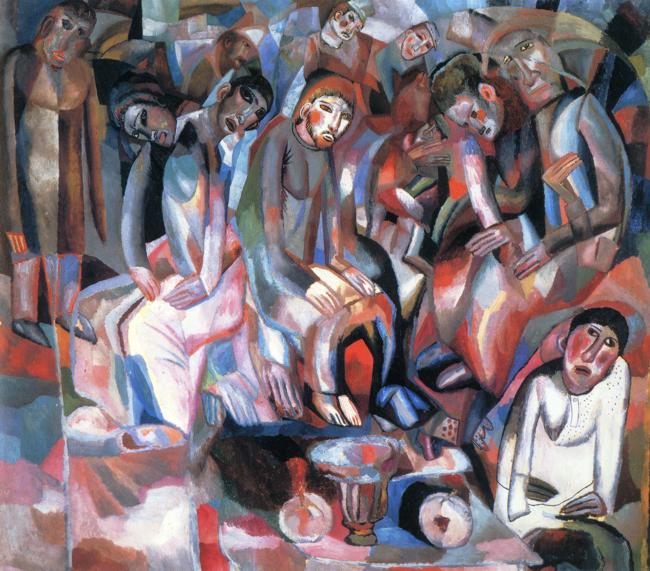Description
In the vast constellation of Russian art of the early twentieth century, the figure of Pavel Filonov, an artist whose work, although often eclipsed by his most famous contemporaries arises as a brilliant star, offers an unparalleled intellectual depth and challenge. "On the table" (1913) is one of those works that encapsulate the complexity and visual exuberance that characterize its artistic legacy. When observing this painting, one is wrapped in a whirlwind of shapes and colors that, in a first glance, may seem chaotic, but that, when they enter their detail, reveal a meticulous and symbolic narrative.
The composition of "on the table" is a symphony of geometries and fragmentation that leads us to the essence of "organic analysis", a method of creation developed by Filonov. This approach focuses on decomposing forms to its most basic components and reconfiguring them in highly structured and complex patterns. The table, a central element in everyday narrative, becomes here a battlefield of plans and angles, synthesizing in its fief of details a microcosm of human life.
The color in the work plays a fundamental role and is not merely decorative. Filonov uses a vibrant palette in which they dominate blue, red and brown oscillations, accentuated with black and black tones that contribute to the feeling of depth and dynamism. The colors seem to emerge and go back in a constant game, creating a visual tension that forces the viewer to an active and inquisitive look.
The characters, although stylized and abstract, are discernible in the scene. The painting suggests the presence of human figures sitting around the table, immersed in a kind of ritual or silent interaction. These beings are composed of geometric lines and shapes that seem to resonate a fragility and fragmentation of the human condition in modernity. The work thus becomes an introspective mirror where identity and existence are dissected and understood in their smaller units.
It is remarkable how Filonov rejects simplicity in favor of a visual density where each sign, each line has a purpose. The overlap of elements and the attention to detail demand from the viewer an active commitment; The observer must deconstruct and interpret, getting involved in a deep dialogue with the work.
The historical context of the creation of "on the table" adds layers of meaning. In 1913, Russia was at the gates of a cultural and social revolution that would transform the country forever. Filonov, with his unique style, not only commented on the fragmentation and complexity of the modern world, but did it in his time, anticipating an era of deep disruptions and changes.
Within the framework of his time, and compared to other contemporaries such as Kazimir Malevich or Wassily Kandinsky, Filonov offers an alternative vision of suprematism or abstract expressionism. While Malevich goes to the supremacy of form and Kandinsky towards the spirituality of color, Filonov works at the intersection of both, where the thorough detail and organic structure are joined to create an entire and penetrating vision of reality.
"On the table" not only is contemplated, it is studied. It is a work that challenges, that encourages thought and reflection. Pavel Filonov, with his skill and unique vision, invites us to a thorough exploration of the inner and outer world, leaving us a visual inheritance that continues to resonate strongly in the panorama of contemporary art.
KUADROS ©, a famous paint on your wall.
Hand-made oil painting reproductions, with the quality of professional artists and the distinctive seal of KUADROS ©.
Art reproduction service with satisfaction guarantee. If you are not completely satisfied with the replica of your painting, we refund your money 100%.

